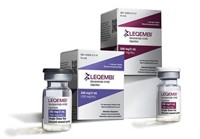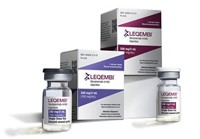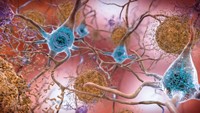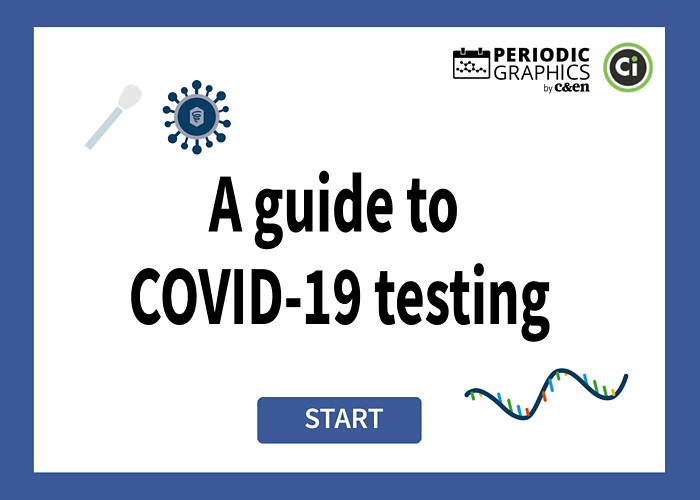Advertisement
Grab your lab coat. Let's get started
Welcome!
Welcome!
Create an account below to get 6 C&EN articles per month, receive newsletters and more - all free.
It seems this is your first time logging in online. Please enter the following information to continue.
As an ACS member you automatically get access to this site. All we need is few more details to create your reading experience.
Not you? Sign in with a different account.
Not you? Sign in with a different account.
ERROR 1
ERROR 1
ERROR 2
ERROR 2
ERROR 2
ERROR 2
ERROR 2
Password and Confirm password must match.
If you have an ACS member number, please enter it here so we can link this account to your membership. (optional)
ERROR 2
ACS values your privacy. By submitting your information, you are gaining access to C&EN and subscribing to our weekly newsletter. We use the information you provide to make your reading experience better, and we will never sell your data to third party members.
Diagnostics
Dementia’s next test: New Alzheimer’s diagnostics are coming
Can they fix the bottlenecks in elder care?
by Rowan Walrath
April 8, 2024
| A version of this story appeared in
Volume 102, Issue 11

Credit: Gretchen Ertl | Dan Hogan sits in the home he shares with his partner in Cambridge, Massachusetts.
In brief
New drugs for Alzheimer’s disease have opened up a secondary market: diagnostics. Up to this point, doctors have relied on invasive tests like positron-emission tomography (PET) scans and cerebrospinal fluid draws to confirm that their patients have the type of misfolded protein the drugs are designed to clear. As the prospect of treatment fuels investment, developers of diagnostics have found simpler and less expensive ways to test for biomarkers with blood samples and digital tools. It’s now up to physicians to decide whether to adopt these new tests and for regulators to determine that they’re safe and effective.
It took Dan Hogan more than 10 years to get a diagnosis of Alzheimer’s disease.
Troubled by memory issues in 2012, he went to a doctor who ordered a neuropsychiatric exam. That test told him he was “fine,” he says. So Hogan coasted along through most of his 70s, even though he says he felt his forgetfulness was “a little bit unusual” compared with that of his peers.
Then, when he was 79, a squash tournament threw Hogan’s memory problems into sharp relief.
“I was playing against a 12-year-old. He beat me, and he came up to me after the match and said, ‘Nice match, Mr. Hogan.’ I said, ‘What do you mean, nice match? We just finished the first game,’” Hogan recalls. “And he said, ‘No, Mr. Hogan. I beat you 3 out of 5.’”
Hogan hadn’t remembered most of the games. He hadn’t remembered leaving the court to chat with his children between rounds. Eleven years after he first sought neurological care, the Cambridge, Massachusetts, resident went back to the hospital.
This time, Hogan’s doctor ordered a fluorodeoxyglucose (FDG) positron-emission tomography (PET) scan to look for glucose in his brain and a lumbar puncture to draw cerebrospinal fluid (CSF) to analyze for biomarkers of Alzheimer’s disease. The FDG PET scan was inconclusive, but the CSF analysis wasn’t. Hogan, now 80, has clumps of misfolded proteins called amyloid-β (Aβ) plaques stuck to his brain and is in the early stages of Alzheimer’s disease.
If it had been up to Hogan, he might have discovered that earlier and through a less invasive method. At one point, he looked into some options and came across a diagnostic called PrecivityAD, made by C2N Diagnostics. PrecivityAD runs blood samples through mass spectrometers to measure the ratio of Aβ42 peptides to Aβ40 peptides, as well as levels of a proteotype of the protein apolipoprotein E, which can signify a genetic risk factor for Alzheimer’s disease (Mol. Neurodegener. 2021, DOI: 10.1186/s13024-021-00451-6).
But Hogan says that PrecivityAD, which first arrived in clinics in 2020 and was updated in August 2023, wasn’t on the list of approved tests at Massachusetts General Hospital; PET scans and CSF analyses were. And those tests can take months to schedule and cost thousands of dollars.
“It’s not that easy,” Hogan says. “You can’t just walk in and get a spinal puncture.”
The diagnostic landscape for Alzheimer’s has recently begun to shift, however. Additional noninvasive tests like PrecivityAD are being developed and deployed, in part because of the availability of the only drug proved to slow decline: Eisai and Biogen’s Leqembi. Investors have committed tens of millions of dollars to developing new diagnostics, from simple blood tests to software that analyzes retinal-scan images. Hospital systems are beginning to incorporate some of these tests into their diagnostic workflows.
“I think 2024 will be a turning point in the field of Alzheimer’s disease and will be a time when specialists begin incorporating blood-based biomarkers into their diagnostic evaluation, which has not yet happened in most subspecialty clinics, ourselves included,” Brad Dickerson, a neurologist at Massachusetts General and professor at Harvard Medical School, says in an email. “This will change soon.”
But Dickerson and other physicians warn that it’s too soon to tell whether these tests can stand on their own.
“Sometimes, I think people believe these can replace cognitive testing and a careful assessment,” says Daniel Press, a neurologist at Beth Israel Deaconess Medical Center. “That’s not at all the case.”

New treatments, new tests
The US Food and Drug Administration gave full approval to Leqembi, generically known as lecanemab, in 2023, opening the door to Medicare reimbursement and a wave of patient demand. The drug is a monoclonal antibody designed to clear away the Aβ plaques that are thought to drive cognitive dysfunction in people with Alzheimer’s. In a Phase 3 clinical trial, Leqembi slowed cognitive and functional decline by 27% over an 18-month period (N. Engl. J. Med. 2022, DOI: 10.1056/NEJMoa2212948).
The FDA label requires that physicians confirm the presence of Aβ before prescribing Leqembi to their patients with Alzheimer’s. But the agency is loose on how physicians go about doing that. “As there are multiple approved diagnostic tests for the presence of amyloid beta pathology, prescribers can choose the test that they feel is most appropriate for their patient,” an FDA spokesperson says.
PET scans and CSF analyses have been the gold standard, but they can be burdensome. The first time Hogan went to have his CSF drawn, technicians punctured the area around his spine six times and still couldn’t get enough fluid. He came back a week and a half later to repeat the procedure—this time with X-ray fluoroscopy guiding the technician’s hand.
Meanwhile, a typical PET scan takes a minimum of 2 h—one for an injected, radioactive tracer to make its way to the patient’s brain and at least half an hour for the patient to lie in a tube-shaped machine, usually with their arms over their head. The cost can range from hundreds to thousands of dollars. It was only last year that Medicare and Medicaid began covering PET scans to diagnose Alzheimer’s outside clinical trials.
Drugmakers are aware that these problems create bottlenecks that could limit adoption of their medicines. Biogen and Eli Lilly and Company—the latter expects FDA approval of its own amyloid-clearing drug, donanemab, this year—both invested in the Diagnostics Accelerator at the Alzheimer’s Drug Discovery Foundation (ADDF) in 2020. Biogen highlighted its support of tau biomarker diagnostics during its most recent earnings call; its partner Eisai has an investment worth up to $15 million in C2N, PrecivityAD’s maker, and collaborations with the medical device makers Sysmex, Cogstate, and Shimadzu.
Enticed by the newfound opportunity, other investors have also recently been drawn to the diagnostic space. A market research report published in March projected that the Alzheimer’s disease diagnostic industry would nearly double between 2023 and 2032, from $4.5 billion to $8.8 billion.
“Having the announcements of the drugs brought completely different investors to the table,” says Catherine Bornbaum, chief business officer of RetiSpec, whose technology analyzes retinal scans for signs of Alzheimer’s. “We’re seeing lots of interest from strategics, from pharma ventures—without naming names. These groups have a direct stake in ensuring that these types of technologies are available at scale to the general public.”
Replacing the PET scan
The ADDF has a long history of funding diagnostics. Around 2000, it started investing in PET scans that could detect amyloid plaques in the brain, according to cofounder and chief science officer Howard Fillit. Those scans eventually played a major role in the accelerated approval of Aduhelm, Leqembi’s ill-fated precursor, and laid the groundwork for the Diagnostics Accelerator, a funding initiative that launched in 2018 with backing from philanthropists including Bill Gates and Leonard Lauder. To date, the accelerator has invested more than $60 million in 58 projects, most of which are blood tests.
“I think there’s a very good expectation that the blood test could replace the PET scan,” Fillit says.

Some of those tests are now coming to fruition. ALZpath, a California-based diagnostic firm funded in part by the ADDF, launched a blood test last month that measures phosphorylated tau 217 (p-tau217), a certain type of protein. People with Alzheimer’s often have tangles of hyperphosphorylated tau inside their neurons, making it a pathological hallmark of the disease alongside Aβ. P-tau also serves as a sort of proxy for Aβ, since higher levels of the protein correlate with increased accumulation of plaques (Nat. Rev. Neurol. 2022, DOI: 10.1038/s41582-022-00665-2).
P-tau217, where the protein is phosphorylated at threonine 217, is particularly useful for differentiating Alzheimer’s from other neurological disorders that also involve tau. It’s also easier to find in the blood than other biomarkers, including Aβ. A 786-person study found that ALZpath’s p-tau217 plasma test was as good as a CSF analysis for diagnosing Alzheimer’s (JAMA Neurol. 2024, DOI: 10.1001/jamaneurol.2023.5319).
“It’s the most accurate plasma biomarker,” Press says.
The arrival of p-tau217 blood tests is a turning point for Alzheimer’s diagnostics. Earlier tests, like PrecivityAD and Quest Diagnostics’ AD-Detect, rely on measuring the ratio of the isoform Aβ42 to Aβ40. Aβ42 clumps in the brain, so Aβ40 serves as a control for the blood measurement: if Aβ42 isn’t showing up in the blood to the same degree Aβ40 is, plaques are most likely accumulating, explains Michael Racke, Quest’s medical director for neurology.
Racke is the first to acknowledge limitations to the ratio tests. AD-Detect has high sensitivity but low specificity—meaning it can accurately detect the presence of Alzheimer’s disease but not necessarily its absence. P-tau217 is much easier to detect in blood plasma samples than other proteins, even other types of phosphorylated tau, like p-tau181.
“There’s other stuff in the blood,” says Masoud Toloue, the CEO of Quanterix, which launched its p-tau217 diagnostic in October. “It’s just a much better test.”
In February, Quanterix announced collaborations with five major US health networks, including Mass General Brigham and Mayo Clinic. These centers will either send samples to Quanterix for processing or install the company’s technology to develop their own tests.
Dickerson, the Massachusetts General neurologist, is among the physicians slated to use the Quanterix tests. But he says he’ll likely use them as just one step in a process that might also include symptom questionnaires, brain MRIs, and the old standbys: PET scans and CSF analyses.
“Most experts do not think they should be used as standalone tests, but rather used as screeners, or as part of a larger workflow,” Dickerson says.
Quality control
In the US, diagnostics have long been regulated as laboratory-developed tests, or LDTs. The FDA typically inspects and certifies the laboratories that make and administer the tests, not the tests themselves. But that will soon change.
The agency proposed a rule in September that would put diagnostics involving bodily specimens—blood, saliva, or tissue—in the same category as medical devices, ensuring they would be subject to direct FDA review. The change would go into effect in phases through 2028. In the meantime, executives at diagnostic firms say they’re in wait-and-see mode.
The eyes have it

“It’s a moving target, right now, for the industry,” says Alidad Mireskandari, CEO of DiamiR Biosciences, which is developing blood tests for Alzheimer’s. “It’s going to depend on how the FDA decides to proceed. We can guess all we want, but at the end of the day, we have to wait for the regulations to come out and figure out a path forward.”
The proposed rule is designed to help eliminate the quality control issues that have plagued the sector in recent years.
In a memo sent days before the FDA’s proposal, Brittany Schuck, deputy office director of the agency’s Office of In Vitro Diagnostics, lays out several examples of substandard tests in recent years. In one instance in 2022, a developer of Alzheimer’s diagnostics asked the FDA to classify its test as a medical device, but the agency’s review found a lack of adequate data showing the test was reliable. The clinical data that were included didn’t represent the intended patient population. The test, which was still being marketed as an LDT, could “put patients at risk of harm due to inaccurate results,” Schuck writes.
The test developer’s identity is unknown: the FDA redacted its name in the memo, citing an exemption in the public records law designed to protect trade secrets and confidential business information.
It’s not the only time an Alzheimer’s test has generated controversy. Last summer, Quest had a run-in with the Alzheimer’s Association over whether AD-Detect should be marketed for people to test themselves at home. The nonprofit argued that tests should be confined to a clinical setting, where a doctor could walk a patient through their results and options for proceeding.
Advertisement
“Blood tests can be used by clinicians who have experience in diagnosing or treating memory disorders to aid in the diagnostic process,” says Rebecca Edelmayer, senior director of scientific engagement at the Alzheimer’s Association. “There may come a time when these types of tests could be used in such a [consumer-directed] manner, but not with the evidence that we have today.”
Quest eventually pulled the direct-to-consumer version from the market. After talking with doctors, Racke came to agree with Edelmayer. “How could you expect someone who has cognitive impairment, who’s not a physician, to understand?” he says.
Experts point to other reasons an amyloid biomarker test shouldn’t be used on its own yet. Foremost among them is that not everyone with amyloid plaques develops Alzheimer’s disease. The pathology is there, but the forgetfulness, speech problems, and confusion may not be in 10–44% of 50- to 90-year-olds (JAMA, J. Am. Med. Assoc. 2015, DOI: 10.1001/jama.2015.4668).
Hogan is a living example of this gap. His case is still considered mild for a reason: he has clear memories of plenty of events, and he’s capable of holding long conversations and presenting over Zoom. But his CSF analysis from last spring showed p-tau levels of over 150 pc/mL—well above the threshold of 68 pc/mL that’s considered normal—and an amyloid-tau index of 0.39, when it should have been above 0.80, Hogan says.
“In both cases, it was pretty bad,” he says. “For me, it’s losing your mind. All of a sudden, you find you’re going to lose your mind. That’s a pretty horrible thing.”
The Alzheimer’s Association formally recommends that blood tests be used as screeners and followed by confirmation via PET scan or CSF analysis whenever possible (Alzheimer’s Dementia 2022, DOI: 10.1002/alz.12756). The organization has no regulatory power, but its recommendations are hugely influential. Its latest appropriate use criteria for blood-based diagnostics were published in 2022, and Edelmayer and her peers will present an updated version at the association’s annual meeting in July.
“The field is moving so fast,” Edelmayer says. “Even the recommendations we put out this year—likely they’ll need to be updated again within a year.”
‘Digital is the new blood’
There’s still considerable debate over the hypothesis that Aβ causes Alzheimer’s disease.
Rhoda Au, a professor of anatomy and neurobiology at Boston University, thinks the available data are heavily skewed to overrepresent the presence of amyloid plaques in people with Alzheimer’s, since most who are tested for Aβ already have some degree of cognitive impairment. But she also thinks certain diagnostics could play a corrective role.
Au leads a team that investigates how digital technology could measure brain aging. With a grant from the ADDF, the group recently used smartphones and tablets to collect data on cognition, gait, balance, mood, and depression from people participating in the Framingham Heart Study. The idea was to establish a low-cost, scalable way to monitor dementia progression. The smartphone-based assessments were comparable to traditional neuropsychological exams, the team found (J. Am. Heart Assoc. 2024, DOI: 10.1161/JAHA.123.032733).
“It’s not sufficient to think about treatment of people just on the basis of biomarker positivity,” Au says. “Our use of the smartphone is: as we’re interacting with it, we’re reflecting our cognitive capabilities. We just need to figure out how to capture it.”
She has a motto: “Digital is the new blood.”
Other researchers are also beginning to use digital models. RetiSpec, a Canadian start-up spun out of the University of Minnesota, is developing a hyperspectral camera that takes a photo of a patient’s retina. Software then analyzes the images for small changes in Aβ and other biomarkers.
Physicians are using the technology for research purposes at Massachusetts General and Brigham and Women’s Hospital, as well as Florida’s K2 Medical Research. RetiSpec’s Bornbaum says the firm is likely to seek regulatory approvals in the US and Canada this year.
“Leqembi is here, and donanemab is expected to be approved in a short time,” she says. “We have so many inbound requests from families, clinicians, primary care, optometry, and ophthalmology. Our inboxes are filled on the daily with requests from people wanting to use this technology.”

And incorporating Alzheimer’s screening into an annual eye exam could give RetiSpec an advantage over other diagnostics, even blood tests. “Eye care is far more accessible, exponentially more accessible, than neurology,” says Eliav Shaked, the firm’s cofounder and CEO.
About one-fifth of the grants the ADDF’s Diagnostics Accelerator has awarded are for purely digital endeavors. Other projects include a virtual reality tool to measure apathy, a device that records brain signals from the ear, and remote monitoring of daily activities with wearables.
Digital technologies are making their way into blood-based diagnostics, too. DiamiR is developing a blood test designed to detect microRNAs shed by dead brain cells. It’s also finalizing machine learning software and algorithms that do the work of analysis. MicroRNAs are a promising biomarker—DiamiR has identified 24 that are specific to the brain and show up in the bloodstream only when brain cells die—but Mireskandari, the CEO, believes they’ll be most useful when layered with other biomarkers and genetic information.
“To me, the companies that succeed are going to be able to tie all these different risk factors together, probably with machine learning and artificial intelligence, and give an overall risk assessment rather than a single point of risk,” Mireskandari says. “I’m not arrogant enough to sit here and say that microRNAs are going to be the one risk factor for Alzheimer’s.”
He prefers the term “risk assessment” to “diagnosis” because it allows for wiggle room—a scale of how likely a person is to have or develop Alzheimer’s, rather than a binary yes or no. In fact, he won’t even let employees refer to DiamiR’s tests as diagnostics.
“I always tell my staff, ‘The D-word is not to be used in front of me,’” Mireskandari says.
The bottleneck problem
It’s hard to overstate how difficult the process of being tested for Alzheimer’s disease is, at least when it comes to physical markers. At one point, Hogan’s doctor ordered an MRI, but Hogan wears a pacemaker defibrillator. He needed special attention—an expert to disconnect the pacemaker and watch his vitals—and Massachusetts General said it couldn’t provide that attention for at least 10 months. He says he eventually “had to be aggressive” and have the imaging done elsewhere.
And that happened in Boston, home to several major health systems and some of the world’s top hospitals, and to a man with both a law degree and a PhD in psychology from Harvard University. What happens to people with fewer resources at their disposal?
“We need to think about people who don’t live in Boston,” says Andreas Jeromin, chief scientific officer at ALZpath. “If we go out 100 miles, if we go up to Maine, there’s not that many MRI machines.”
Cliff Singer is a psychiatrist and geriatrician at Northern Light Acadia Hospital, in Bangor, Maine, a city of less than 32,000 people. He wears many hats: medical director of outpatient services, director of a neurocognitive research program, and chief of the hospital’s Center for Geriatric, Cognitive, and Mental Health, which houses a mood and memory clinic. It’s the only dementia care specialty clinic in the state that “seriously combines research with clinical care,” Singer says.
As it stands, he and his colleagues get referrals from patients all over Maine. An aging agency in Aroostook County, for instance, essentially triages dementia patients: primary care providers refer people to the agency, the agency presents cases to Acadia Hospital every 2 weeks, and together they determine the best candidates for specialty care.
Until recently, the hospital had a 2-year wait list. With the addition of another geriatrician and a nurse practitioner, that’s now down to 6 months.
“Aroostook County is the most rural county in a rural state,” Singer says. “They’re 3 h away.”
For cases that don’t make their way to Bangor, Singer gives direction to primary care providers. Acadia Hospital recently secured about $1.3 million from the federal government to establish a rural training program that will teach staff within the system how to care for dementia patients. The hospital is also working with the Maine Pediatric and Behavioral Health Partnership and MaineHealth on an iteration of the national Project ECHO (Extension for Community Healthcare Outcomes) to connect specialists in the state with community health providers.
According to the Alzheimer’s Association, 55% of primary care physicians who have patients with the disease say there aren’t enough dementia care specialists in their communities. The US will need to almost triple the number of geriatricians to effectively care for the nearly 13 million Americans projected to have Alzheimer’s by 2050, the organization says.
Advertisement
Some experts think full FDA approval of a simpler test would flatten the learning curve, so to speak, making it possible for more doctors to treat Alzheimer’s and related dementias. ALZpath’s Jeromin believes a blood test—whether made by his or another firm—will be approved as a medical device later this year.
Still, no technology is a panacea, and no physician is advised to use a blood test on its own. Singer says the prospect of misdiagnosis in a place like rural Maine is a “huge, huge deal” given how long it might take to see a specialist for follow-up. But it’s a risk in major medical hubs, too.
To avoid that, neurologists tend to have extensive diagnostic workflows. At Beth Israel Deaconess Medical Center, Press typically takes a patient’s history and does cognitive assessments, like questionnaires, before moving forward with any pathological testing. If a person showed signs of cognitive impairment at that stage, he would do more thorough cognitive testing—and only then would he begin to discuss biomarkers with patients.
“These tests really have to be done in the right clinical context, and by that I mean very specifically they need to be done when a person is known to have significant memory impairment,” Press says. “I think there’s a lot of excitement about these biomarkers, but honestly, they really need to be used correctly, in the right context. Otherwise, it’s going to do more harm than good.”








Join the conversation
Contact the reporter
Submit a Letter to the Editor for publication
Engage with us on Twitter